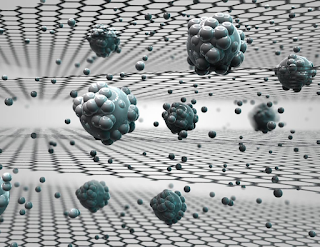Have you ever wondered what 94 year old John Goodenough, co-inventor of the
lithium-ion battery, is doing?? He is hoping to find another
breakthrough in battery technology. I think, he has succeded. A team
of scientists under him has developed the first all-solid-state
battery cells that could lead to safer, faster-charging,
longer-lasting rechargeable batteries for handheld mobile devices,
electric cars and stationary energy storage.
The
new battery uses a sodium- or lithium-coated glass electrolyte that
triples the energy density of lithium-ion, it also recharges in
minutes, survives thousands charging cycles, operates across a wide
range of temperatures (-4˚ F to 140˚ F) and wont cause fire.
Unlike
today’s
lithium-ion batteries, glass electrolytes are
used which prevents formation of dendrites or metal whiskers that
leads to short
circuits and fires. Since
the
solid-glass electrolytes have high conductivity, at -20 degrees
Celsius, this type of battery in a car could perform well in subzero
degree weather. This is the first all-solid-state battery cell that
can operate under 60 degree Celsius.
Conventional lithium-ion batteries can be dangerous because they contain a flammable electrolyte under pressure. The batteries produce electricity as lithium ions move from the negative electrode to the positive electrode during discharge and back when charging. Here instead of the flammable electrolytes glass anodes are used.The use of an alkali-metal anode (lithium, sodium or potassium) which isn't possible with conventional batteries increases the energy density of a cathode and delivers a long cycle life.
Conventional lithium-ion batteries can be dangerous because they contain a flammable electrolyte under pressure. The batteries produce electricity as lithium ions move from the negative electrode to the positive electrode during discharge and back when charging. Here instead of the flammable electrolytes glass anodes are used.The use of an alkali-metal anode (lithium, sodium or potassium) which isn't possible with conventional batteries increases the energy density of a cathode and delivers a long cycle life.
Goodenough
thinks to replace lithium with sodium. Sodium and lithium are both
alkali metals, with the same +1 charge. But sodium, which is commonly
available, and can be extracted from sea water,which could make the
new battery chemistry less expensive than lithium-ion cells.The
cells would function at a lower temperature than lithium-ion
batteries, and they can be manufactured out of Conventional
batteries aren't able to use an alkali-metal-anode such as sodium.
Solid-state
Li-on battery appears to contain only one electrochemical in the
opposing electrodes either metallic lithium or sodium. How will
voltage flow takes place if there is no difference in the chemical
potentials (Fermi energies) between the two metallic electrodes??
According to Goodenough, the answer is that if the lithium plated on
the cathode current collector is thin enough for its reaction with
the current collector to have its Fermi energy lowered to that of the
current collector, the Fermi energy of the lithium anode is higher
than that of the thin lithium plated on the cathode current
collector.
Cost,
safety, energy density, rates of charge and discharge and cycle life
are critical factors
for
battery-driven cars. Forh
that these are the best option. Goodenough added that this new
battery technology could also store intermittent solar and wind power
on the electric grid. if the glass batteries can be scaled up
commercially, which remains uncertain in this
still-proof-of-concept-phase research, wil be a great break through
in battery technology. I really hope this will help battery makers to develop
and test their new materials in electric vehicles and energy storage
devices.


